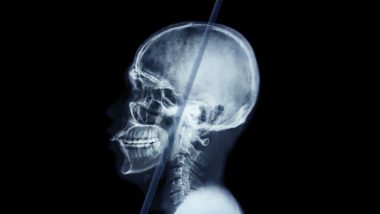Washington, October 25: A recent study suggested the effect of the lifestyle of an individual, especially women on their bone and bone density. Researchers at the University of Illinois Urbana-Champaign have studied a population of women in rural Poland for the past four years to understand how their lifestyle affects their bone density. The age group and lifestyle of these women are often overlooked in such studies.
The study "Bone density and frame size in adult women: effects of body size, habitual use, and life history" was published in the American Journal of Human Biology.
"My work focuses on understanding how our activities shape our skeleton and what it means for the modern population," said Katharine Lee, a recent graduate of the Clancy group, which is affiliated with the Beckman Institute for Advanced Science and Technology.
The study focused on a population of farmers whose lifestyles involve substantial farm and domestic labour, such as growing fruits and vegetables, churning butter, beating rugs, washing windows, and caring for children. Severe COVID-19 Symptoms May Prolong for 20 Days, Suggests Study.
"We made some basic body measurements and looked at the physical activity patterns of these women," Lee said. "We also used a bone sonometer, which was provided through Beckman's Biomedical Imaging Center. It is a portable device that can be conveniently used to carry out bone density measurements."
The researchers wanted to focus on women between the ages of 18 and 46, an age group that is not often looked at in bone density studies. "We wondered why there was so little research on premenopausal women, since presumably their bone density and activity predict postmenopausal osteoporosis," said Kathryn Clancy, an associate professor of anthropology at Illinois and a part-time Beckman faculty member.
"We saw that measures such as grip strength and lean mass are associated with the bone density and frame size of these premenopausal women. We also saw that the bone density of the radius, which is the bone at the base of your thumb, is very high compared to an average white woman of European descent," Lee said. "Interestingly, we don't see this increased bone density in Polish American women. We don't fully understand what factors are causing it." Antibodies Fade Quickly in Recovering COVID-19 Patients, Finds Study.
The researchers believe that this study sheds light on the specific contexts of this lifestyle. "A lot of these measures have looked at large populations and averaged, so they have missed many of these details," Lee said. "It is also important to think about which populations are not represented in the literature and look at lifestyles that are different from the modern, sedentary lifestyle that most people in the US have."
Moving forward, the researchers are interested in understanding whether the childhood environment has helped shape the bone health of the women. "We have interviewed them about the different types of work they did when they were growing up. We asked whether they grew up on a farm, whether they had farm animals, or whether they tended a garden. Those activities, rather than the ones they are doing now, might be associated with the bone health measures," Lee said.
(The above story is verified and authored by ANI staff, ANI is South Asia's leading multimedia news agency with over 100 bureaus in India, South Asia and across the globe. ANI brings the latest news on Politics and Current Affairs in India & around the World, Sports, Health, Fitness, Entertainment, & News. The views appearing in the above post do not reflect the opinions of LatestLY)













 Quickly
Quickly











